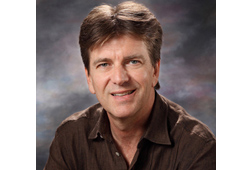
Jeff Waluch: The Potters House install was quite impressive, How did you come to your component decision?
Craig: Potters House is an interesting project (understatement…) because of the tremendous sound pressure levels that needed to be achieved, even with a lav mic. Basically the system is capable (and needed) of getting to around 125 dB at the console.
To get this level, we needed really powerful and compact speakers. There are limited options for this. We chose to use the EAW KF900 series. Probably could also have done it with (L-Acoustics) V-DOSC.
Chris Kathman: Wally or Craig, maybe you could tell the viewers at home what Potter’s House is.
Craig: Potters House is a 8,200-seat church in Dallas.
Chris Kathman: Wow! How many zones/delays?
Craig: Left-center-right cluster each with 3 KF900 MH boxes and 4 (4×15” drivers) cabinets. First delay was 12 ASV7652 boxes (2×15, 2×10, 1×2”) and rear delay of 16 boxes (12 and 1”).
Charles: Why was there the need for 125 dB at the console in a church? Even allowing 10dB for headroom, that’s 115 dB average!
Craig: The pastor of this church is T.D. Jakes, who does a lot of stadium gigs and is used to concert levels. Also the crowd is so LOUD that the system has to get over them. I know it sounds crazy…but you have to be there. Of course they only hit those levels for brief moments of time.
yam4000vca: Did the client specify that 125 dB level number? I have done quite a few kickin’ churches and never needed that much.
Craig: The client insured that I went to one of their arena gigs and wanted me to understand that they did not want to run out of system for any level of concert that they might do. 125d B is just what the system is capable of, not what they run it at all the time.
Michael: Is Potters House the place with the 3 Innovasons – house/mon/video?
Craig: We specified the Yamaha PM1Ds for this project (3 units) but as they have not been released yet, they currently have a 64-channel Soundcraft Series 5 and a SM20 at console.
lilbob: Who supplied the equipment for you on the Potter’s House install?
Craig: SPL
yamama3000: Can you explain “beam steering” and it’s advantages?
Craig: Beam steering is the technique of loudspeaker placement and signal processing implementation that allows you to control and direct the projection of sound. A simple example: Say you are on stage with side stacks of sub-bass, it is a relatively easy task to position the subs so that you achieve a null in energy projection to the center of the stage.
Michael: How does beam steering work?
Craig: It’s pretty simple really. If two waves from a speaker (any frequency) coincide at the same path length, then we get 6 dB of summation. If they are spaced apart by 1/2 wavelength of the frequency of interest, then they cancel completely. It’s using this cancellation that is tricky.
yamama3000: When you say “loudspeaker placement” are you talking about the boxes themselves or the drivers within the boxes?
Craig: If we look at the sub bass example, then spacing the subs 8 feet apart horizontally will result in at least 15 dB cancellation at 65 Hz at 90 degrees off axis to the plane of the subs. The wavelengths don’t care if the drivers are in the same box or in different boxes. What counts is the spacing and the frequency of interest.
